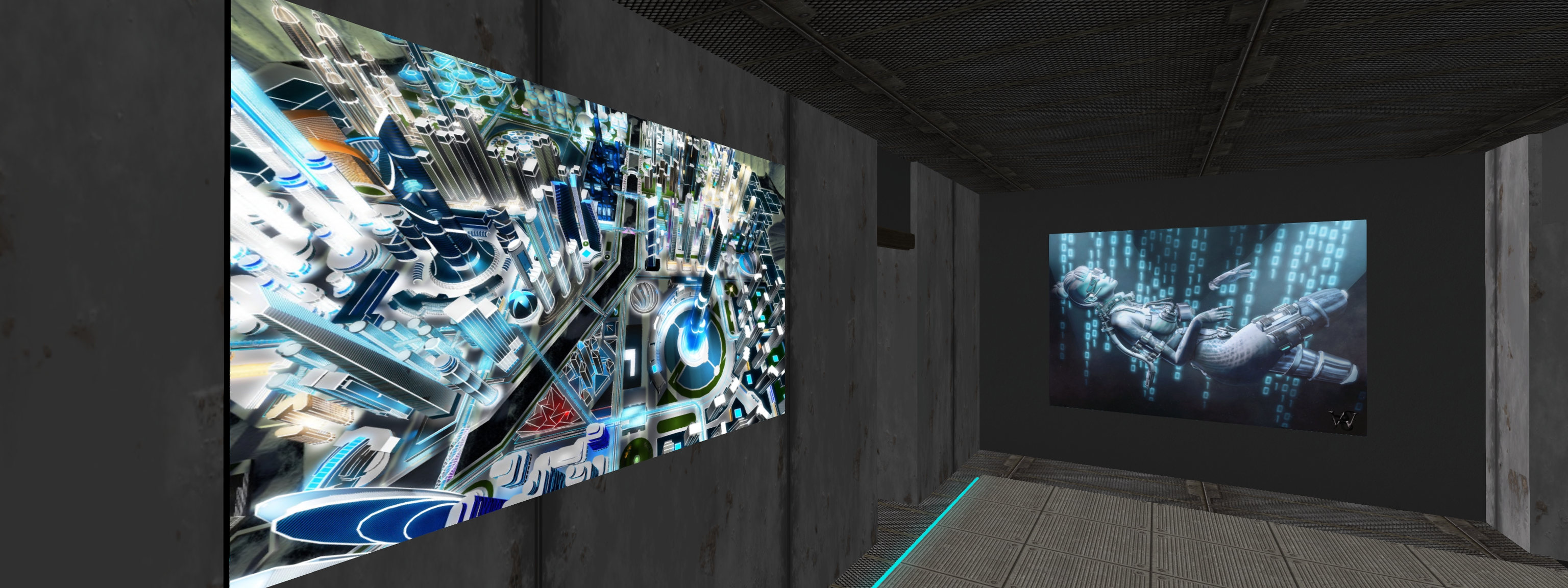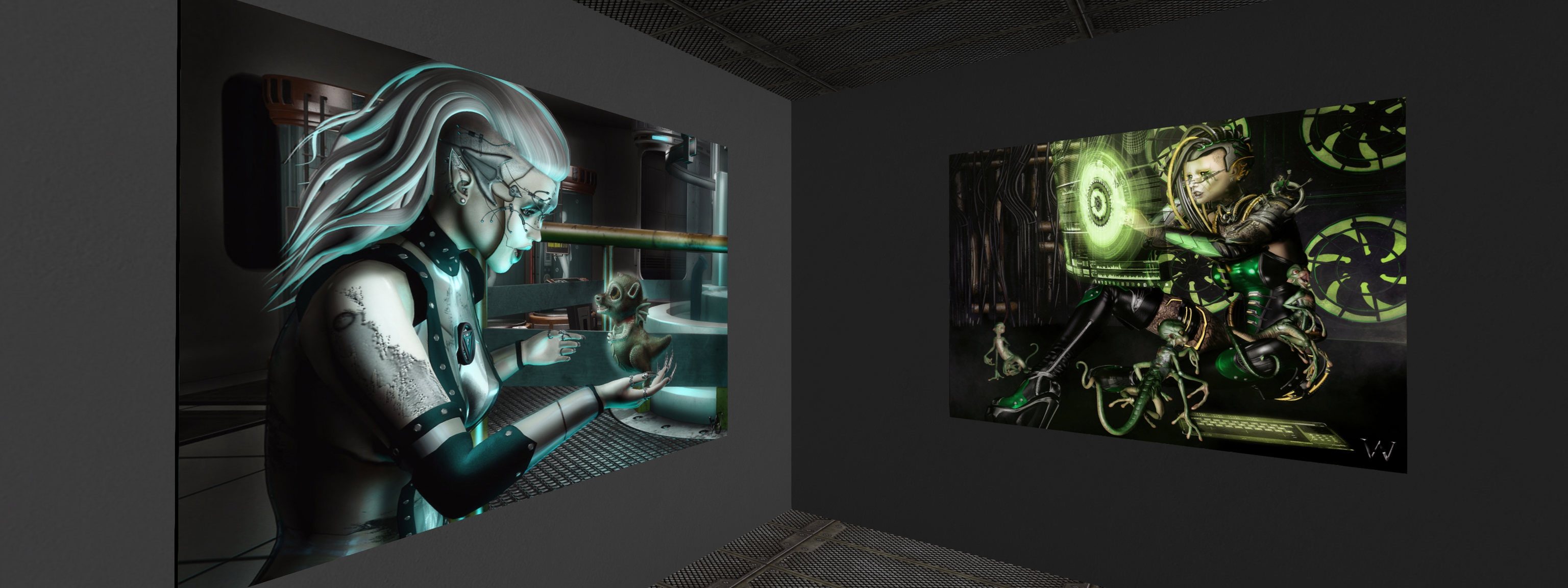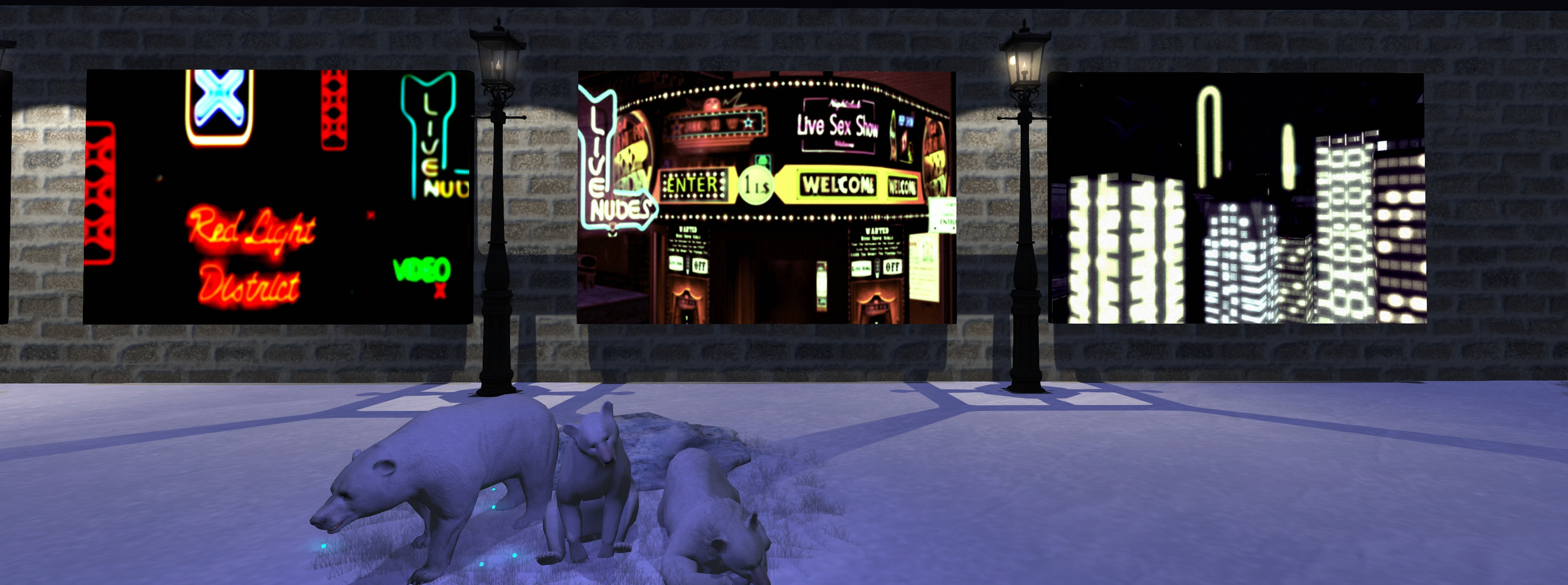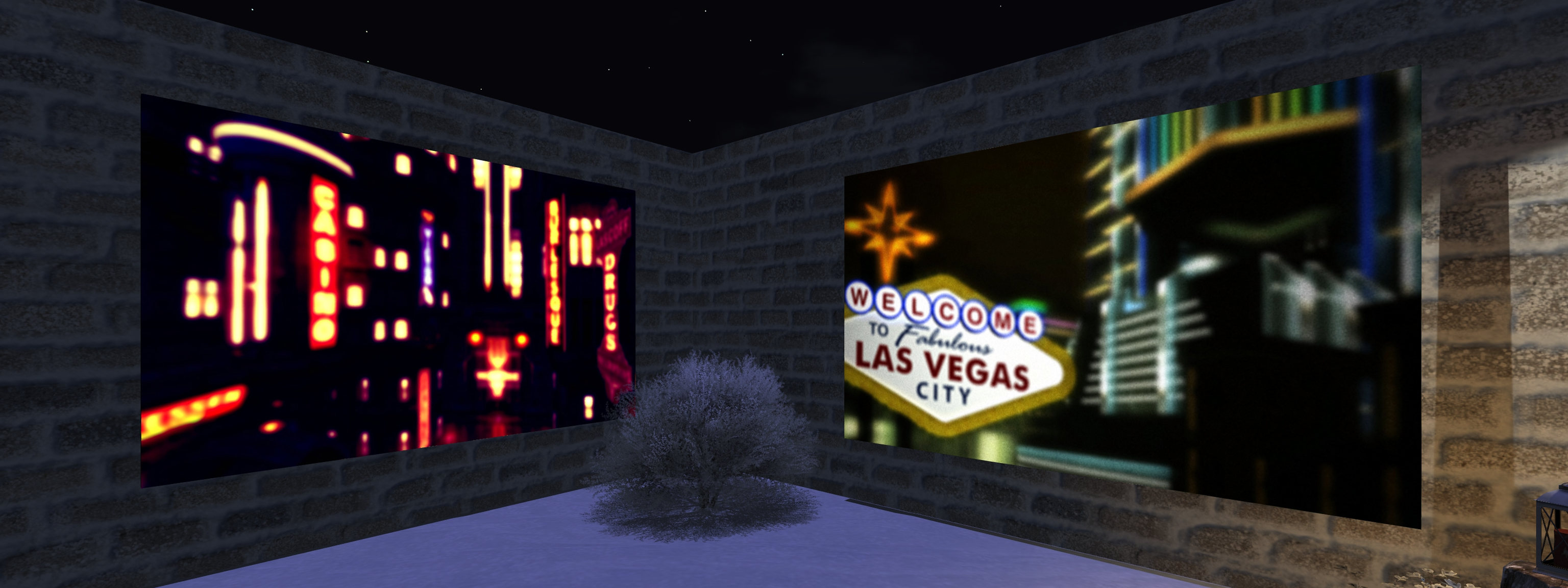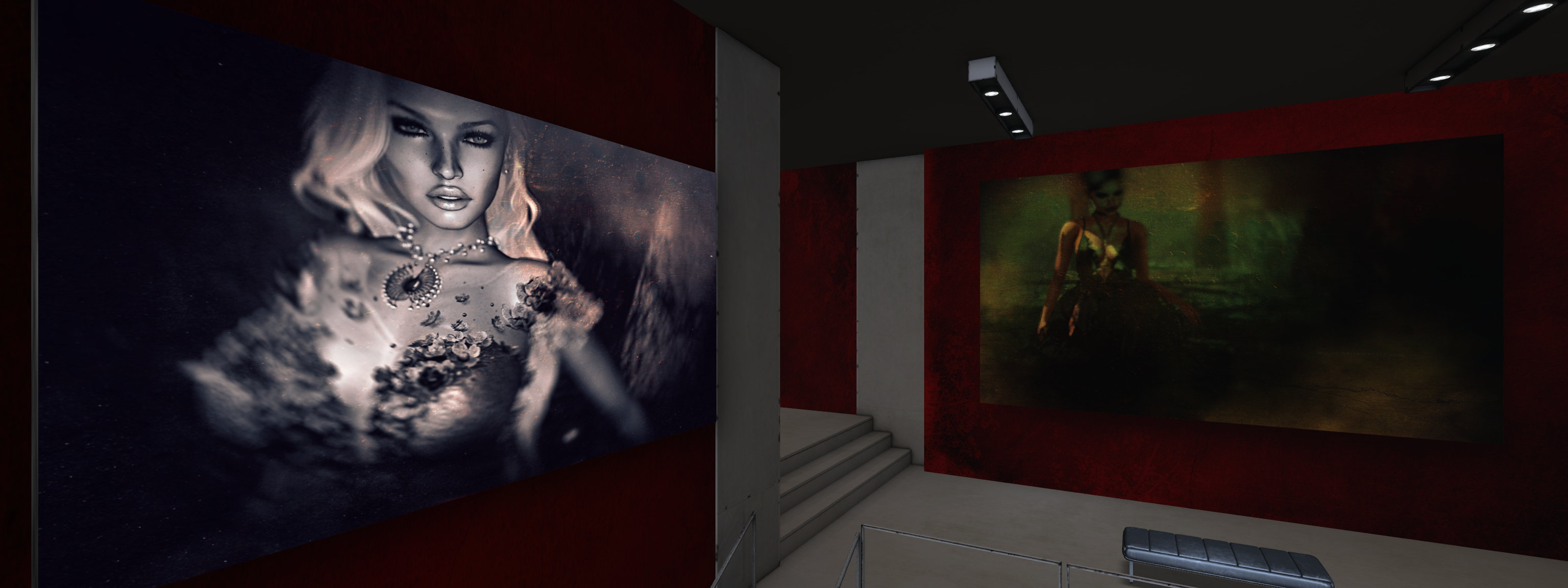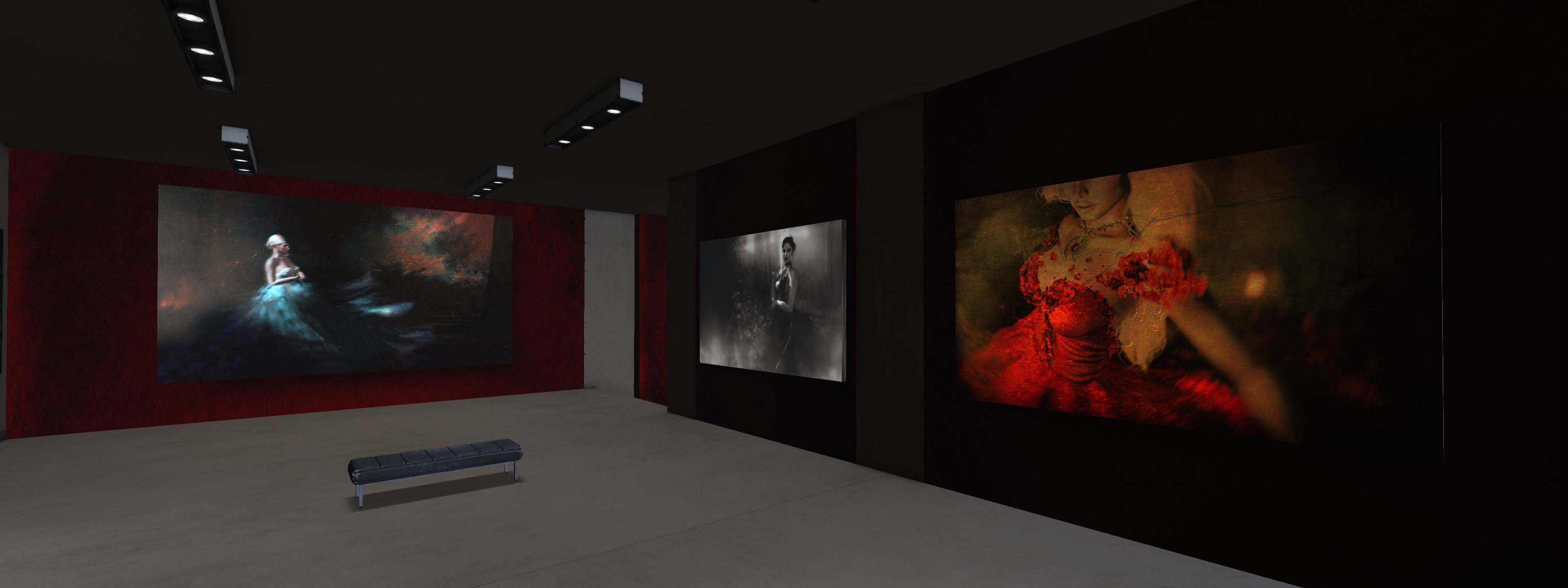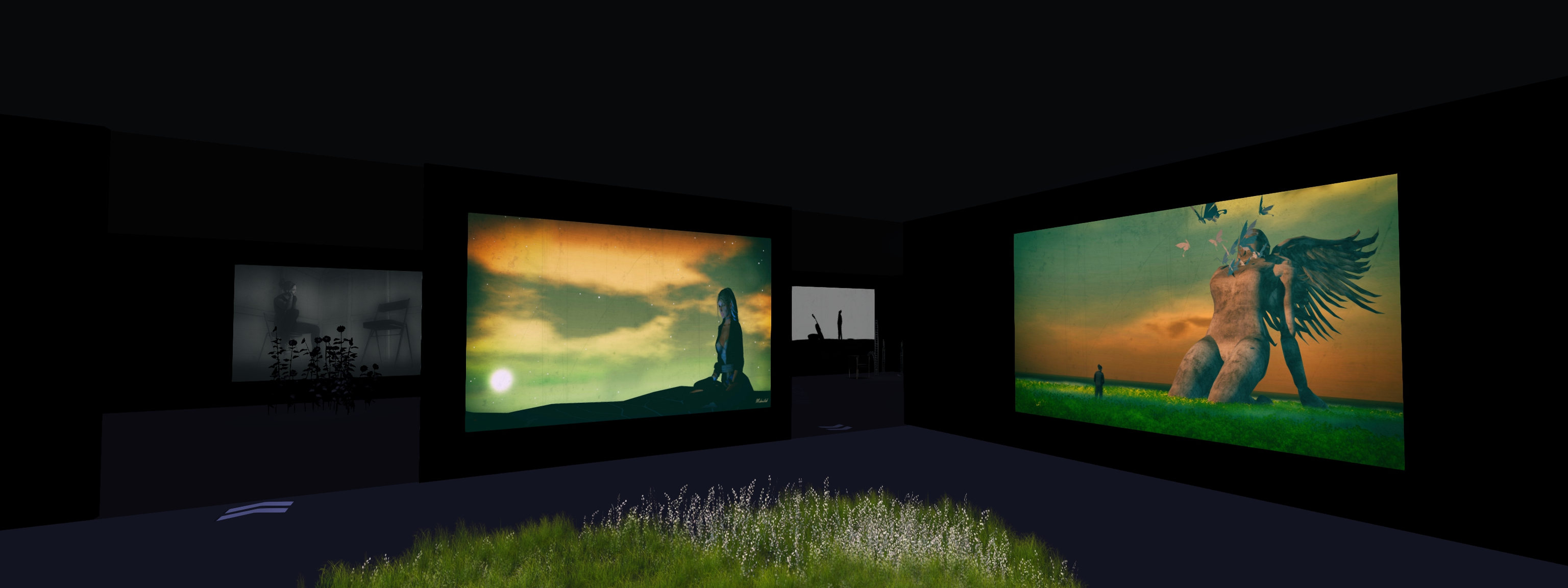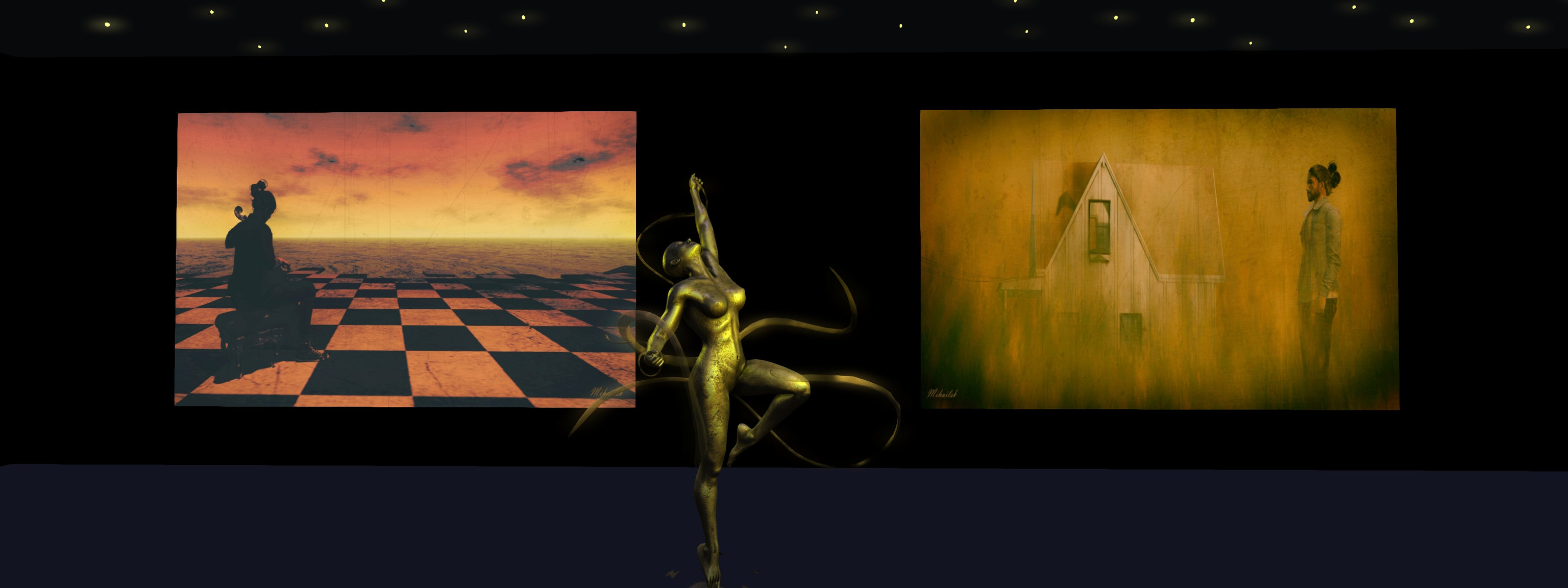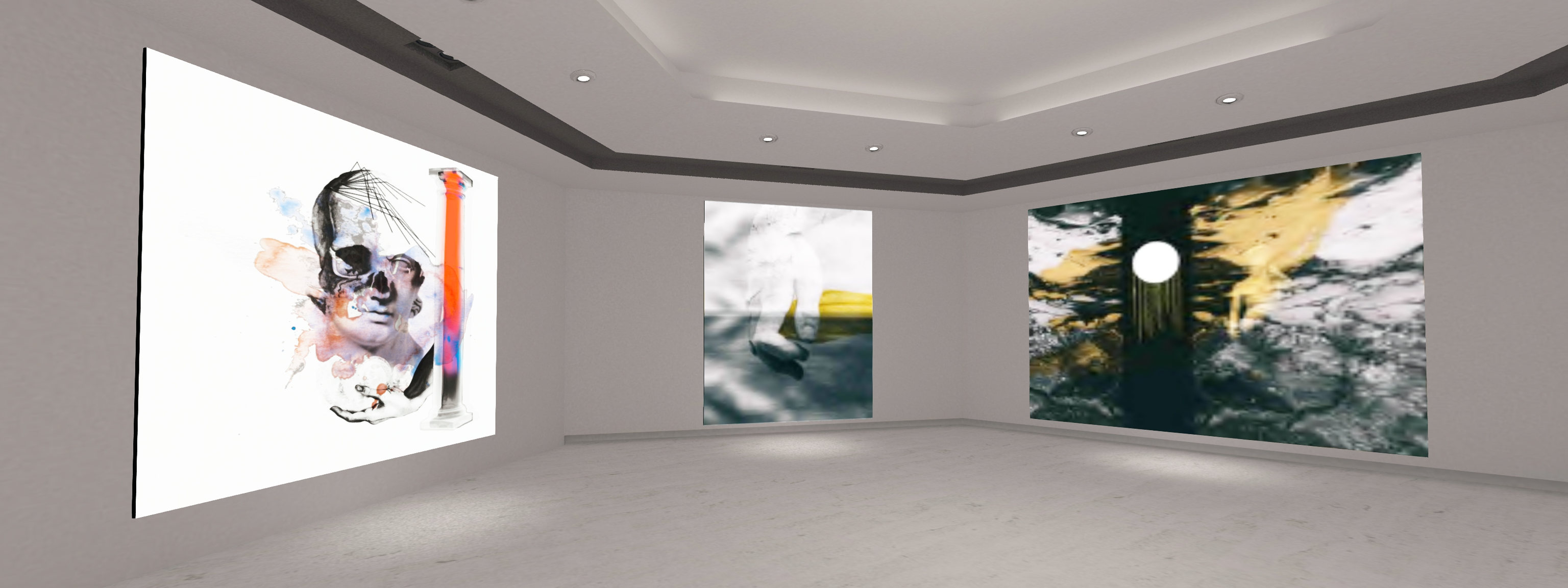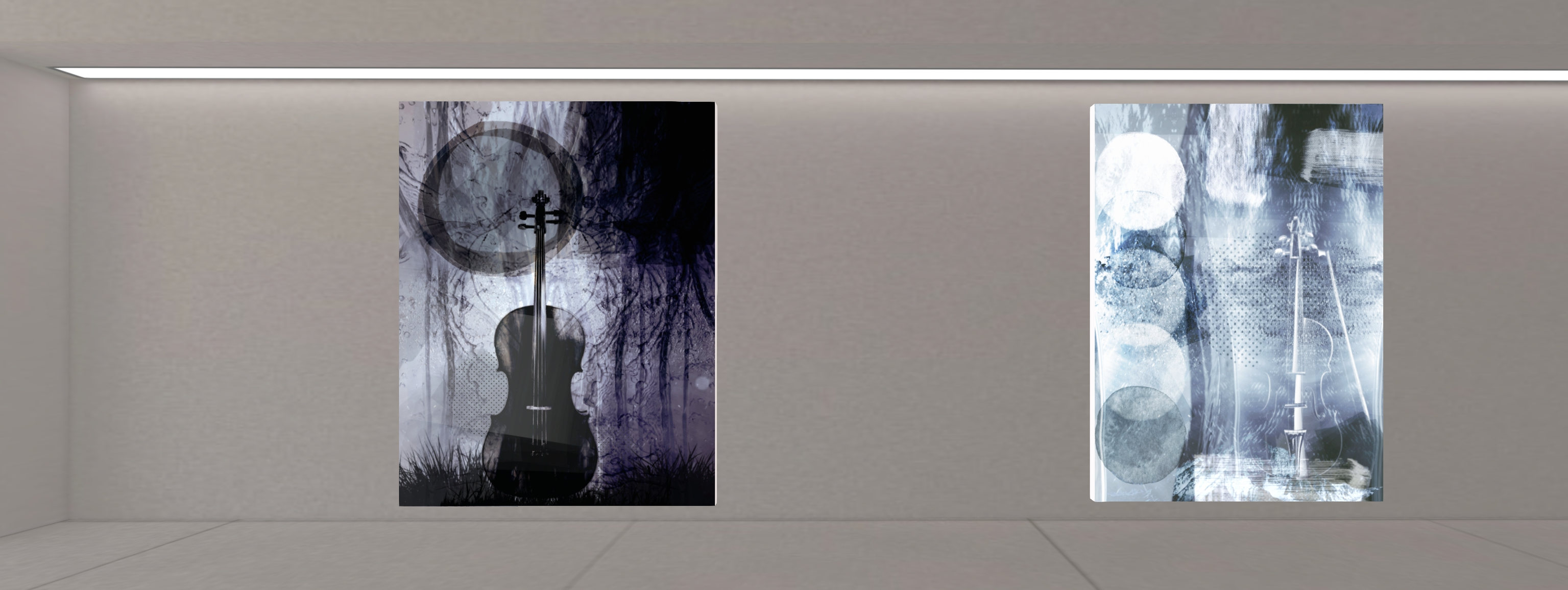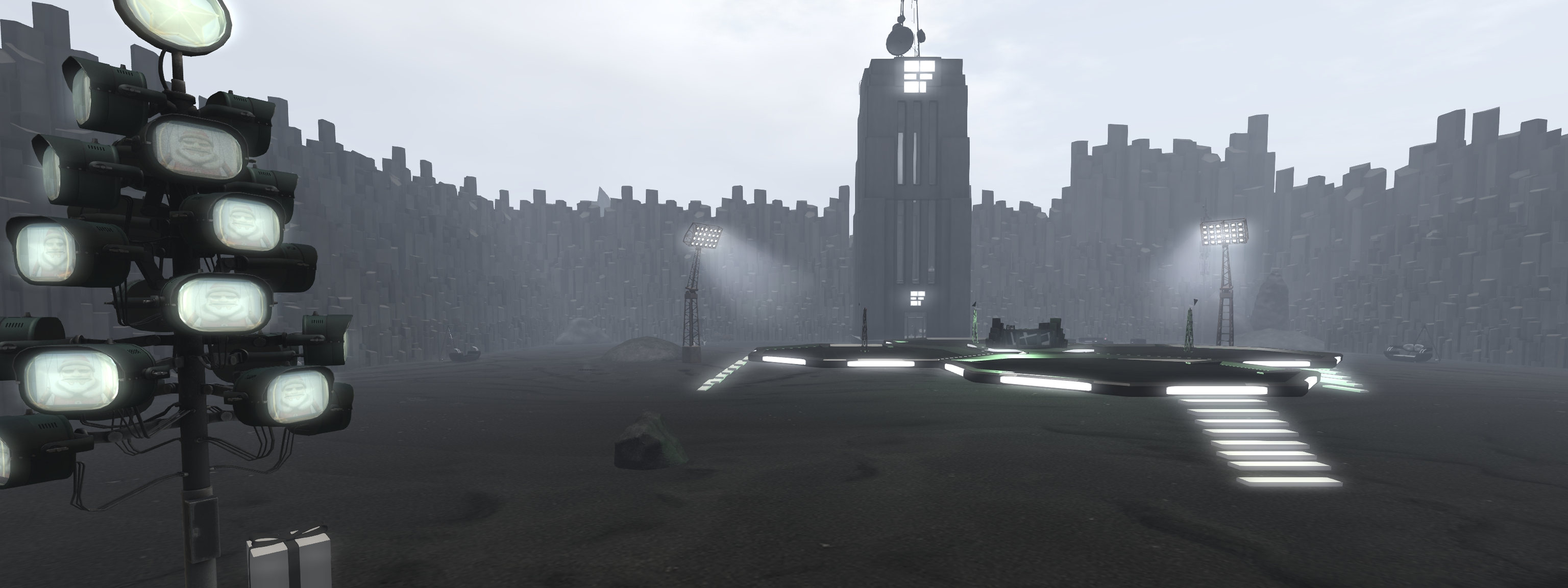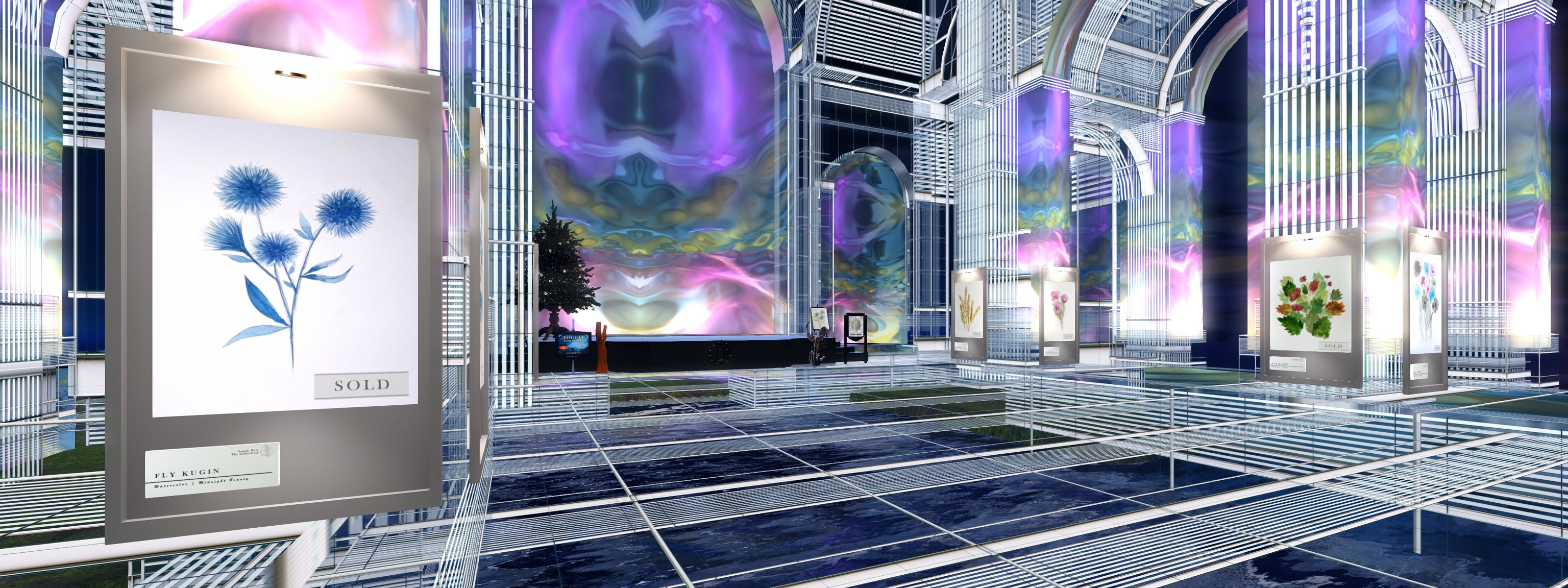
In September 20221, I visited Chuck Clip’s Sinful Retreat art hub to witness The Falling Leaves, a series of watercolour paintings by Fly Kugin (FlyQueen), uploaded by the artist for presentation in Second Life (see: The Falling Leaves: Fly’s watercolours in Second Life). At the time, the tone of the notes with the exhibition and Fly’s own Profile gave the impression she was taking a possibly extended leave of absence from Second Life. I was therefore surprised – and delighted – that just before Christmas, I received an invitation to visit a further exhibition by Fly, which is once again being hosted by Chuck and Jewell, this time on the Sinful Retreat adjunct region, Angel’s Rest.
Silent Beauties features Fly’s second collection of watercolours to be displayed in-world, and it is one that continues her exploration of watercolour painting as a means of expression through the creation of pictures depicting flora and flowers. However, where The Falling Leaves focused more on the former, Silent Beauties presents twelve simply gorgeous paintings of garden and wild flowers.
Offered as individual pieces for one-time sale (no copies), with each flower simply presented on a white canvas, the fifteen pieces in this collection are genuinely captivating – as is the setting for their display, which should be seen as a work of art in its own right, as I’ll come to in a moment.

The majority of Fly’s pieces are individually hung – the exception being Rose Effect, a group of four paintings of a rose presented in a single frame. Most of the paintings are offered with a single dominant colour / tone that reflects its title and / or emotional essence, including the four paintings of the rose to be found in Rose Effect. Taken individually or together, they demonstrate that Fly has, in the 6 months since she commenced her experiments with watercolours, become an accomplished and expressive artist in the medium (a further proof of which is the fact that all of the pieces have already been sold, and the exhibition only opened on December 21st).
The space in which Silent Beauties is being exhibited is The Cathedral, a build that might be said to be a piece of Second Life artistic history. Originally designed and created in 2009 by Patch Thibaud, it was textured by by DB Bailey utilising alphas to create its distinctive crystalline look. In 2020, Djehuti-Anpu (Thoth Jansen), an immersive, multi-media artist whose work I’ve long appreciated and admired, joined with DB to add media textures to the build, magnifying its depth and richness.
The frames for Fly’s art are displayed along the columns of the cathedral’s knave, one or two per column. These columns also feature some of the media surfaces Thoth has added to the Cathedral. To witness them in all their glory, together with the rest of Thoth’s artistry, (which blends well with Fly’s paintings), enter the Cathedral and enable media playback (click the movie camera in the top right corner of the viewer, alongside the media stream button and those for camera and graphics presets). The image below offers a sample of what you will see.
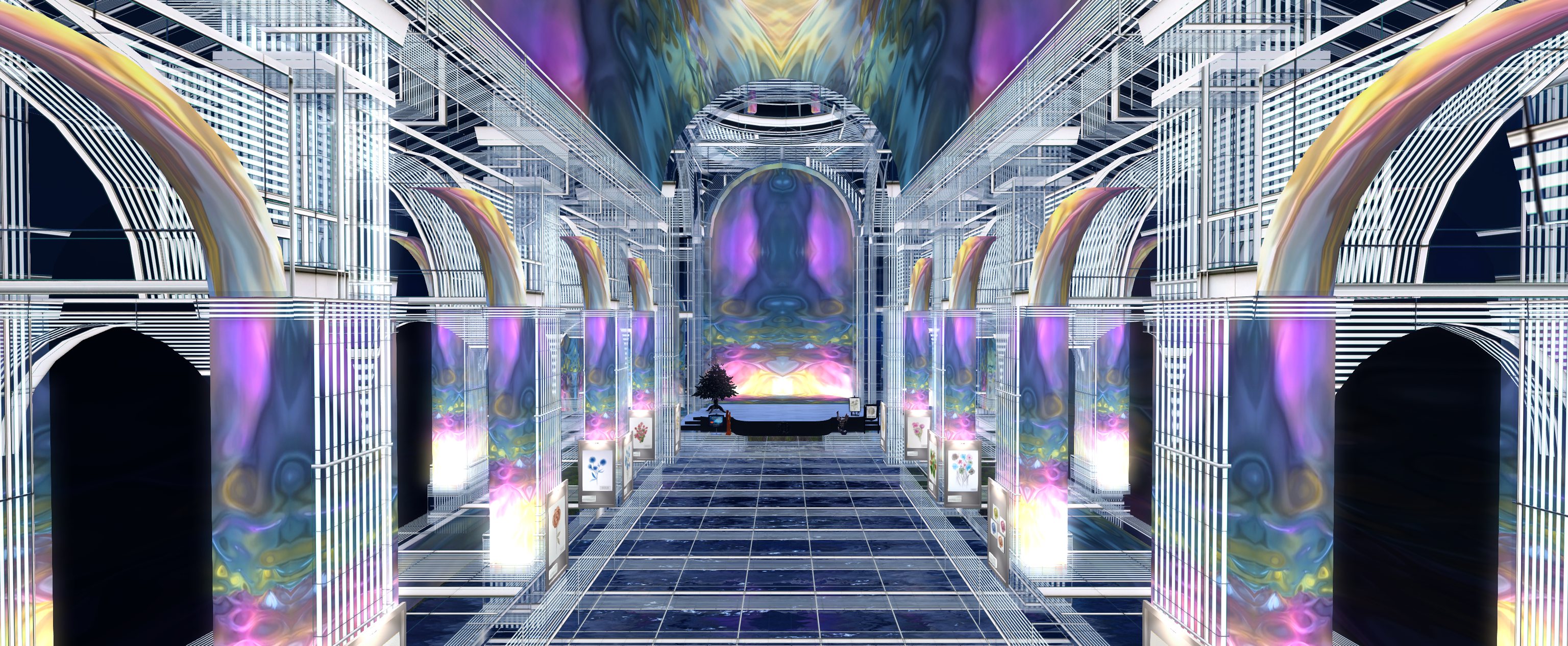
SLurl Details
-
The Cathedral / Fly’s Silent Beauties (Angel’s Rest, rated Adult)
